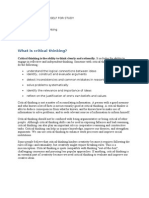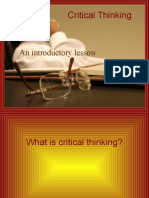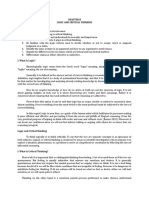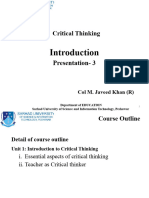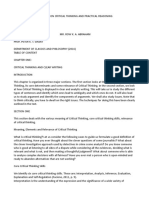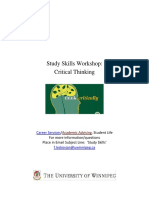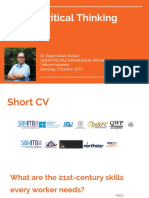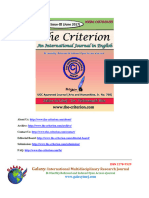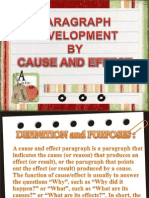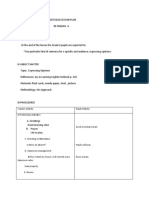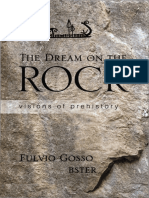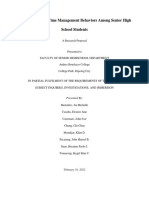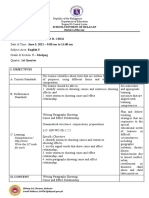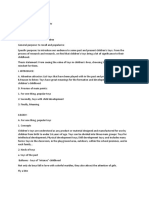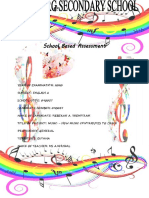0% found this document useful (0 votes)
28 views19 pagesCritical Thinking Notes
Critical thinking is an essential skill in 21st-century learning that involves reasoning to discern truth from falsehood, understanding logic and fallacies, and being open-minded. It requires self-regulation, questioning, and analyzing information while maintaining an objective stance. Barriers to critical thinking include lack of training, information, preconceptions, and time, and it is crucial for students to be taught these skills systematically to enhance their analytical abilities.
Uploaded by
jmsulonCopyright
© © All Rights Reserved
We take content rights seriously. If you suspect this is your content, claim it here.
Available Formats
Download as DOCX, PDF, TXT or read online on Scribd
0% found this document useful (0 votes)
28 views19 pagesCritical Thinking Notes
Critical thinking is an essential skill in 21st-century learning that involves reasoning to discern truth from falsehood, understanding logic and fallacies, and being open-minded. It requires self-regulation, questioning, and analyzing information while maintaining an objective stance. Barriers to critical thinking include lack of training, information, preconceptions, and time, and it is crucial for students to be taught these skills systematically to enhance their analytical abilities.
Uploaded by
jmsulonCopyright
© © All Rights Reserved
We take content rights seriously. If you suspect this is your content, claim it here.
Available Formats
Download as DOCX, PDF, TXT or read online on Scribd
/ 19


